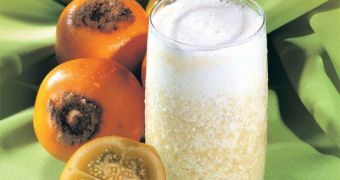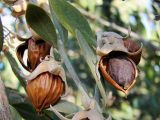Since prehistory, people have been consuming about 3,000 plant species. Of these species, about 150 have been cultivated systematically, and the development of agriculture just made humans to exclude "marginal" species, for focusing on an increasingly smaller number of plant species. This resulted in the fact that nowadays about 20 species make about 99% of the food crop: cereals (wheat, corn, rice, miller, sorghum), tubers (potato, sweet potato and manioc), legumes (pea, bean, peanut and soybean), sugarcane, beet, coconut, banana and a few others.
These species make the base of the diet and the only form of combating hunger worldwide. Beyond the fact that monocultures come with many risks (vulnerability to pests, diseases and a great dependence on human activities), they have led to the limited cultivation and even disappearance of many plants that would be more efficient in local environment. This happened especially in the ex-colonies, when many local species had to make place for species asked on the market of the metropolises.
For example, quinoa (Chenopodium quinoa), a protein-rich vegetable from the Andes, was replaced by wheat and corn during the Spanish colonization. Japanese millet (Echinochloa esculenta) produces one harvest after just one wetting. How many of you have ever heard about it? Or the buruti palm, the most widespread worldwide, still not systematically exploited, which produces comestible fruits and shoots, and from its trunk starch can be extracted?
Over 10% of the comestible plants are menaced with extinction or already extinct, while 20,000 species need protection for their genetic diversity. The rediscovery and cultivation of some forgotten plants would allow, especially in poor tropical areas, the development of cultures necessary for an alimentary independence of these people. About 400 tropical plant species are considered not to be exploited at their maximum nutritious and industrial potential.
This is the case of jojoba (Simmondsia chinensis) from the subtropical North America. Its seeds contain an industrial liquid wax whose only other known natural source is represented by the sperm whales. The plant tolerates high desert temperatures and stands with little water. It is an evergreen bush that, in irrigated fields, can grow up to 3 m (10 ft) tall, while in dry areas it does not exceed 1 m (3.3 ft) in height. The plant is dioic, thus only female bushes will produce fruit. The wax makes 50% of the weight of the seeds and it is extracted by pressure or using solvents.
The main quality of the jojoba wax is that it does not alter following successive heating, but it keeps its viscosity. The wax is already used in beauty products laboratories and for making medicine products. After the wax extraction, the remains contain 35% proteins with unusual properties: mice that consumed them lost appetite.
Lulo or naranjilla ("small orange" in Spanish) (Solanum quitoense) is closely related to the tomato and very appreciated in Peru, Columbia, Ecuador and Guatemala, but ignored in the rest of the world. Like the tomato, it originated in the Andes but it has a taste similar to grapefruit and strawberries. The naranjilla is consumed fresh or as juice. The 1-2 m (3.3-6.6 ft) tall bush produces lemon-colored fruit the size of a tennis ball. The fruit is covered by easily removable white hairs. Naranjilla is sensitive to cold and some diseases, but it does not require too much care for delivering 1-2 tons per hectare in a wet clime and at an altitude of 800-2,000 m (2,660-6,600 ft). The plant could be well cultivated in many African areas, and researches could lead to more resistant and fertile strains.
The Amazon area has delivered many ignored crop plants, like babaco (Vasconcellea heilbornii) a papaya relative, acai fruit (Euterpe oleracea, a palm), bacuri (Platonis insignis) and cupuacu or cupuarana (Theobroma grandiflorum), a close relative of the cacao tree (Theobroma cacao).
Another neglected tropical crop is taro (Colocasia esculenta). It produces a starch rich subterranean corm. The taste of the flesh resemble that of peanuts and it can be used for getting a flour used for making soups, biscuits and beverages. It can be included in the diet of the toddlers, being rich in carbohydrates, minerals (calcium and phosphorus) and vitamins, and poor in fats and proteins. This plant is cultivated in swampy or well-irrigated soils. The plant matures in 6 to 18 months after being planted, that's why on a taro field, the crop can be at different levels of maturation simultaneously.
Taro is popular in Egypt, Black Africa, Philippines, Hawaii, Indonesia, Polynesia, Japan, China and Antilles, but ignored in tropical Americas.

 14 DAY TRIAL //
14 DAY TRIAL // 
